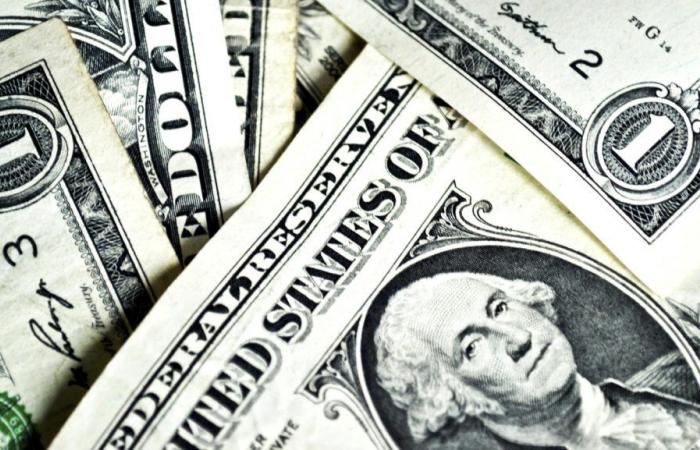The US dollar has reached near-record highs in 2024. Il Dollar Index (DXY) which tracks the value of the U.S. currency against six major competitors, increased by 1.2% in Junefalling just 0.3% below the yearly high reached in April.
This growth reflects a combination of factorsincluding the maintenance of high interest rates by the Federal Reserve, while other major central bankssuch as the European Central Bank, the Swiss National Bank and the Bank of Canada, they have already started cutting rates. Furthermore, investors see the US dollar as a safe havenand this has probably benefited from the political uncertainty linked to the French legislative elections, with the first round of voting scheduled for Sunday.
Strengthening of the Dollar against the Yen and the Euro
The dollar has gained about 14% against the yen since the beginning of the year, surpassing the 160 level this week and bringing the Japanese currency to its weakest point since 1986. So has the euro, the main component of the DXY index , suffered a loss of more than 3% against the dollar in 2024.
In this scenario, here is the view of Mark HaefeleChief Investment Officer, UBS Global Wealth Management.
Possible new upward pressure for the dollar
In the short term, further upward pressure on the US dollar is possible. If former US President Donald Trump is perceived as the likely winner of the election after the first televised debate with President Joe Biden, this could further strengthen the dollar. A Republican Party victory, in fact, could lead to more expansionary fiscal policies, increasing long-term government bond yields.
Long-term forecast
Despite the dollar’s recent strength, it is expected to decline in the coming months. A slowdown in US economic growth could in fact allow the Fed to start cutting interest rates starting from September, according to forecasts. The dollar, currently considered overvalued, could come under downward pressure as markets begin to anticipate a deeper rate cut cycle from the Fed. Additionally, concerns about the US fiscal deficit could pose an additional headwind in the longer term .
Implications for other major G10 currencies
Euro
In the short term, risks to the euro could give way to a favorable macroeconomic outlook. Although the outcome of the French elections is uncertain, a “Frexit” narrative does not seem likely to emerge. Furthermore, a recovery in economic sentiment in the region suggests an improvement in economic activity, providing a positive outlook for the euro versus the dollar.
Yen
The yen’s weakness may persist until the end of the year, but chasing the dollar’s rally is not advisable. While yield differentials between the US and Japan are still wide, these are expected to narrow by the end of the year. Japanese government interventions to support the yen may have limited effects, but the gradual normalization of the Bank of Japan’s monetary policy could begin to narrow yield differentials. Therefore, we do not recommend increasing dollar exposure against the yen.
Swiss Franc
The Swiss franc is likely to appreciate further. The recent rate cut by the Swiss National Bank has halted the franc’s rally, but the central bank is not expected to make any further significant cuts. Yield spreads between Switzerland, the US and Europe are likely to narrow in the coming months, supporting the appreciation of the franc, which remains a safe haven currency amid global political uncertainty.
The Biden-Trump debate
The debate between President Joe Biden and former President Donald Trump, held Thursday night in Georgia, featured heated exchanges on the economy, immigration, abortion, national security and foreign policy. Neither candidate enjoys widespread public support, with approval ratings below 50%. The debate raised questions about Biden’s physical stamina for another term, and Trump effectively used the format to avoid uncomfortable questions.
Implications for markets
In the short term, the market’s reaction to the debate could lead to tactical adjustments. Sectors such as consumer discretionary and renewable energy could suffer in a Republican victory scenario, while the financial sector could see potential upside.
Macroeconomic data and economic outlook
First quarter 2024 real GDP was revised to an increase of 1.4%, slightly higher than the previous 1.3%. However, private consumption was revised downwards to 1.5% from the previous 2.0%. Durable goods orders and pending home sales also showed signs of slowing, pointing to cooling domestic demand.
Despite signs of an economic slowdown, a “soft landing” is expected rather than a recession. Consumer spending should be supported by rising real wages and relatively healthy household budgets. The Fed is expected to ease monetary policy later this year, with two 25 basis point rate cuts by the end of the year, the first of which is in September. Against this backdrop, investors are recommended to position themselves for a lower interest rate environment by investing in high-quality bonds.
Conclusions
The US dollar is likely to weaken in the medium term due to interest rate cuts and fiscal deficit concerns. Investors should use periods of dollar strength to reduce exposure to the currency or employ volatility selling strategies to generate portfolio income.






